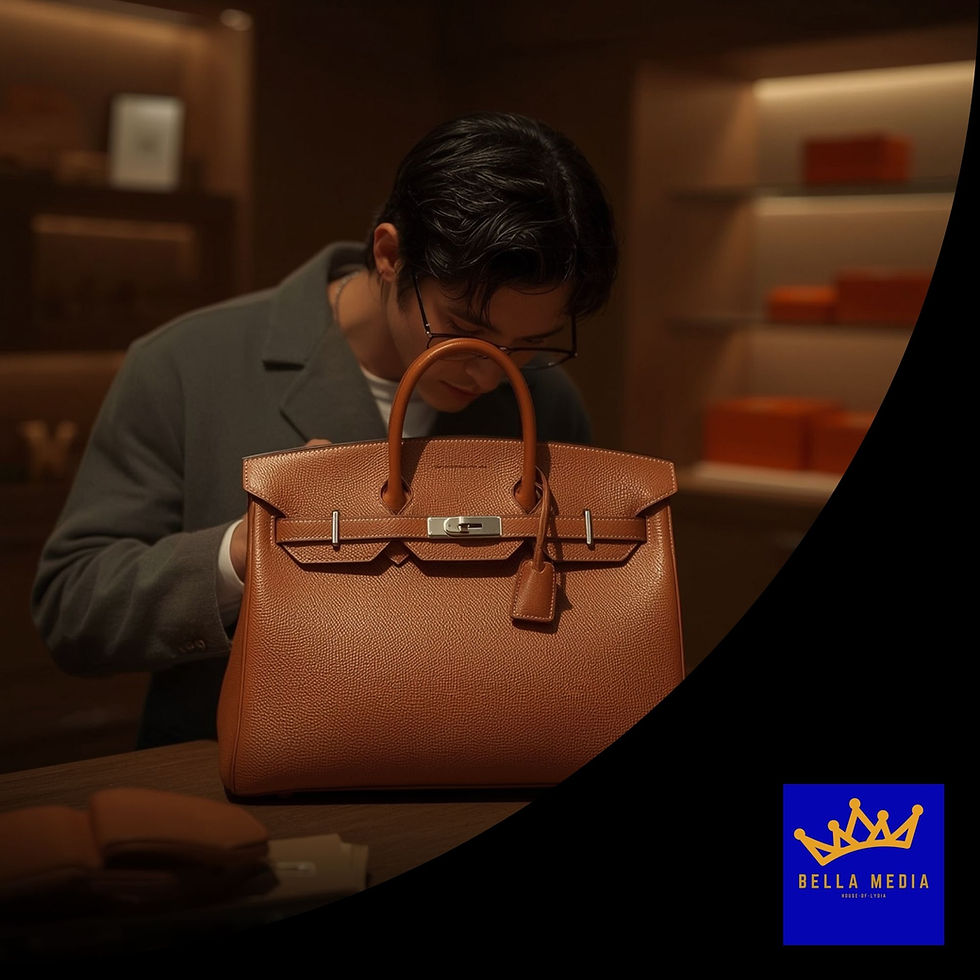Beyond the Birkin: How Hermès Sells Lifestyle, Legacy, and Loyalty
- Bella Tian
- Aug 13
- 3 min read
Why does a leather bag become a status scripture? Why does waiting increase desire? And how can brands replicate the Hermès alchemy (without pretending to be Hermès)?
bellamedia.blog peels back the stitches.

The simplest product, perfected
When Thierry Hermès opened a small harness workshop in Paris in 1837, he was selling utility — not mystique. Today, the house of Hermès is shorthand for craft, patience, and cultural capital. The story of the Birkin (and its cousin, the Kelly) shows how a product becomes a lifestyle, a legacy, and, most importantly, a loyalty engine for generations.
1) Craft first: the invisible marketing of mastery
Hermès doesn’t outsource its story; it builds it, stitch by stitch. A large share of Hermès manufacturing happens in-house, and a large proportion of items are made in France — an industrial setup that lets the brand claim provenance and control over quality. That integrated production model is a marketing tool disguised as operations.
Marketing takeaway: Craft is content. Show the human hands, the atelier rituals, the months of apprenticeship. That’s not a product spec — it’s meaning.
2) Scarcity is strategy, not accident
Hermès tightly controls supply and deliberately curates availability. Rationing access — the mystique of the wait, the “invitation” to buy, the selective placements in boutiques — transforms the Birkin from a bag into an aspirational rite of passage. This is not chaos; it’s calibrated scarcity that protects status and resale value.
Ask your audience: Would they pay more for immediacy — or for rarity?
Sources: Martin Roll, Sotheby’s
3) Experience as retail theatre
Hermès stores are curated worlds, not commodity showrooms. Flagships have become destination spaces with cafés, curated events, and personal shopping experiences that lengthen customer time and emotional attachment. The boutique visit is part of the product.
Actionable tip: Convert your store into a story location — add rituals, not just product displays.
Source: CXG
4) Loyalty built by relationships (not campaigns)
Hermès invests in long-term clienteling — one-on-one relationships between sales artisans and high-net-worth clients. It’s not about viral ads; it’s about knowing which client prefers which leather, which atelier, and which moment to offer a rare piece.
If you’re a marketer: Map the lifetime touchpoints — not just the first click.
Source: Renascence
5) The resale loop: prestige and proof
A healthy secondhand market has paradoxically amplified Hermès’ cachet. When Birkins consistently appreciate in value on secondary markets, each resale event becomes proof of the brand’s enduring status — and a marketing signal to the ultra-wealthy that Hermès goods are both wearable and investible.
Practical note: If your product becomes collectible, protect the customer experience that created that collectibility.
Source: Sotheby’s
6) Quiet growth: minimal shouting, maximal discipline
Hermès spends less on flashy mass campaigns and more on controlled growth, investing in production capacity and ateliers so scarcity remains intentional and quality scales with demand.
Marketing lesson: Growth without dilution means investing in what makes you rare — not in shouting louder.
Source: Hermès Finance
7) Brand DNA > Trend-chasing
Hermès’ playbook is not “be famous now.” It’s continuity: the equestrian roots, archives of design, six generations of artisan traditions — history that compounds into trust. That is the “legacy” people buy.
How to steal Hermès’ playbook without copying it (three practical moves)
Operationalize craft — Publish videos of your team making your product. Show the mistakes, the fixes, the human time investment.
Design intentional scarcity — Limited drops, invitation-only access, or membership tiers that reward patience. Don’t fake it; make scarcity meaningful.
Convert retail into ritual — Host private previews, create branded experiences in-store, train sales staff as brand custodians.
Use these tactics to translate product utility into cultural capital — the same cultural currency that makes a Birkin more than a bag.
Hermès didn’t build a handbag — it cultivated a desirable life. For marketers, the lesson is clear: build rituals, invest in craft, and make scarcity meaningful.
Want a one-page “Hermès-lite” strategy checklist to apply these tactics to your own brand? Subscribe below and get the 6-step launch framework straight to your inbox.



Comments